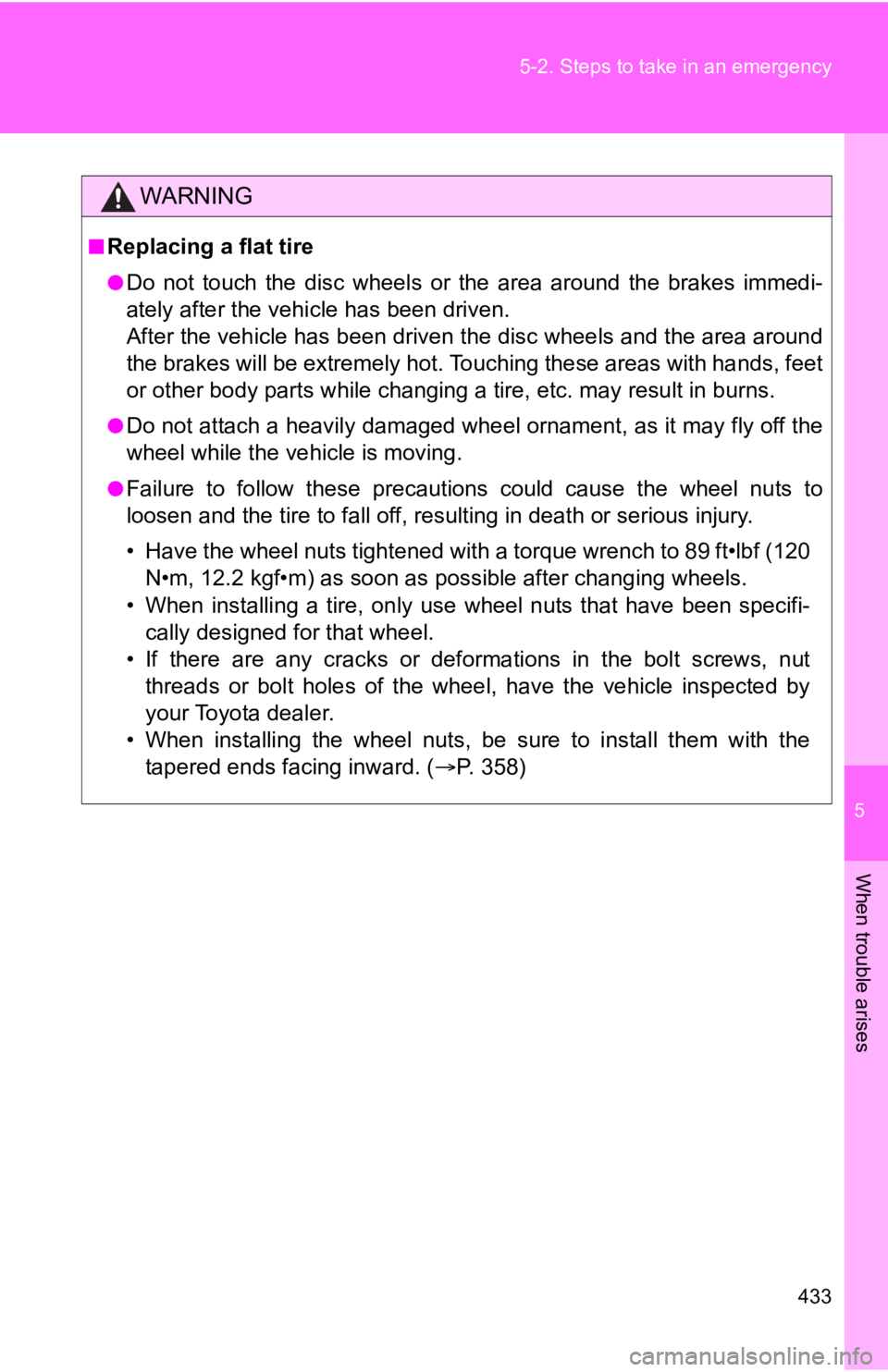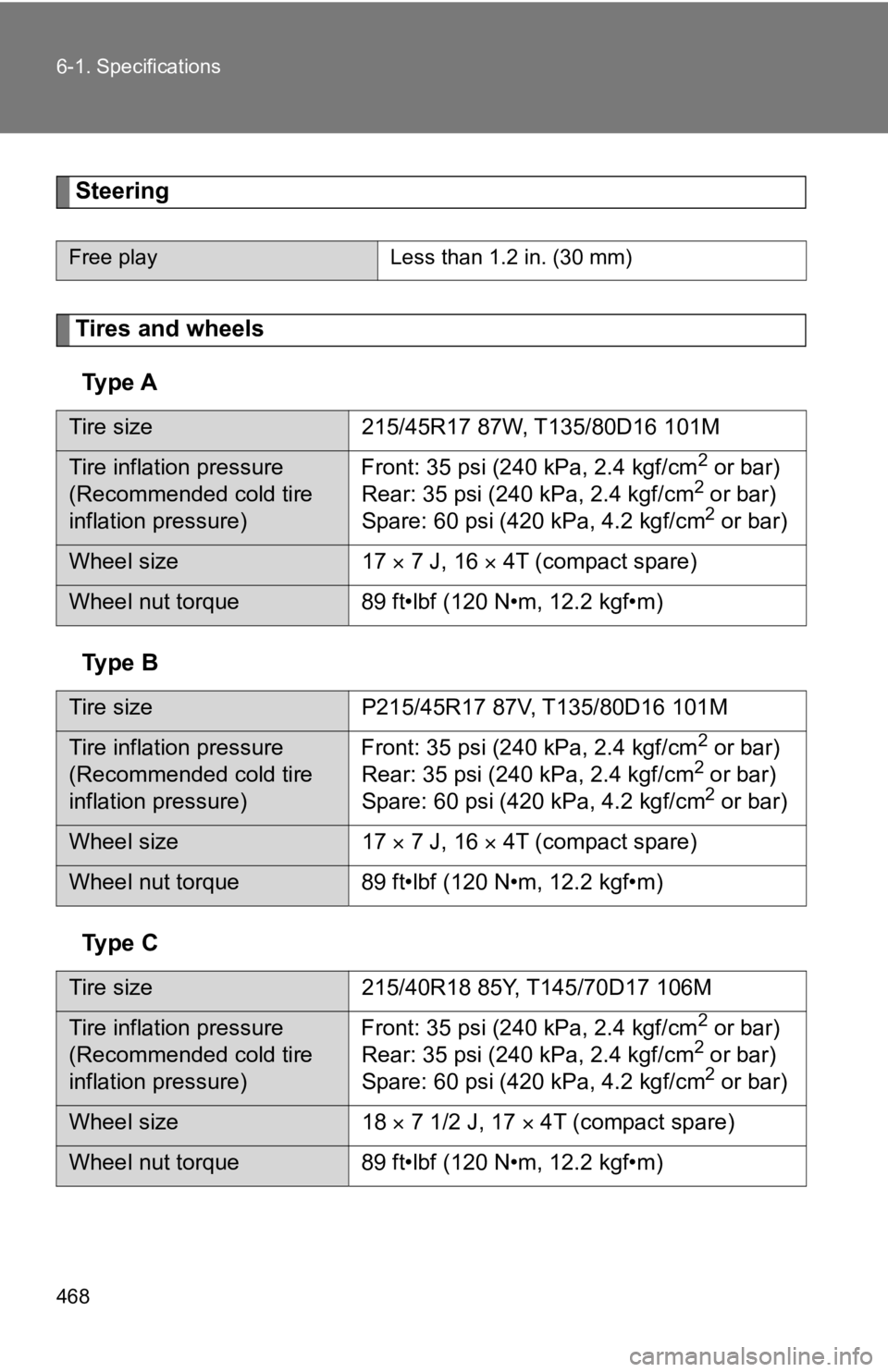Page 164 of 532

164 2-1. Driving procedures
NOTICE
■Pre-driving check
Trapping small animals in the cooling fan and belts of the engi ne may result
in a malfunction. Check that no small animal enters the engine compartment
and under the vehicle before starting the engine.
■ When driving the vehicle
Vehicles with an automatic transmission
●Do not depress the accelerator and brake pedals at the same tim e during
driving, as this may r estrain driving torque.
● Do not use the accelerator pedal or depress the accelerator and brake
pedals at the same time to hold the vehicle on a hill.
Vehicles with a manual transmission
● Do not depress the accelerator and brake pedals at the same tim e during
driving, as this may r estrain driving torque.
● Do not shift gears unless the clutch pedal is fully depressed. After shifting,
do not release the clutch pedal abruptly. Doing so may damage t he clutch,
transmission and gears.
● Observe the following to prevent the clutch from being damaged.
• Do not rest your foot on the clutch pedal while driving.
Doing so may cause clutch trouble.
• Do not use any gear other than the 1st gear when starting off and mov-
ing forward.
Doing so may damage the clutch.
• Do not use the clutch to hold the vehicle when stopping on an uphill
grade.
Doing so may damage the clutch.
● Do not shift the shift lever to R when the vehicle is still moving. Doing so
may damage the clutch, transmission and gears.
● Do not release the clutch pedal too quickly. Doing so may damag e the
transmission.
■ When parking the vehicle (vehicl es with an automatic transmission)
Always shift the shift lever to P. Failure to do so may cause t he vehicle to
move or the vehicle may accelerate suddenly if the accelerator pedal is acci-
dentally depressed.
Page 214 of 532
214 2-2. Instrument cluster
Scale of the G-force display
The scale of the record of the
maximum G-forces and G-force
ball trace can be changed
between 1.0 G and 0.5 G by
pressing and holding while
the normal display screen is dis-
played.
Accelerator pedal input
Brake fluid pressure
Steering amount
If the steering wheel is turned
completely to the left or right, the
bottom side of the gauge on the
corresponding side will be illumi-
nated in red.
This display is intended for use as a guideline. Depending on f actors such as
the road surface condition, temperature and vehicle speed, the display may
not show the actual condition of the vehicle.
■ Power and torque curve
Power output
To r q u e
Current engine speed
The vertical bar will slide laterally
according to the current engine
speed.
This chart is intended for reference only and does not show the actual
engine torque or output.
Page 429 of 532
5
When trouble arises
429
5-2. Steps to take in an emergency
Installing the spare tire
Remove any dirt or foreign mat-
ter from the wheel contact sur-
face.
If foreign matter is on the wheel
contact surface, the wheel nuts
may loosen while the vehicle is
in motion, and the tire may
come off the vehicle.
Install the spare tire and loosely
tighten each wheel nut by hand
to approximately the same
amount.
Tighten the wheel nuts until the
tapered portion comes into
loose contact with the disc
wheel seat.
Lower the vehicle.
Firmly tighten each nut two or
three times in the order shown in
the illustration.
Tightening torque:
89 ft•lbf (120 N•m, 12.2 kgf•m)
STEP 1
�7�D�S�H�U�H�G���S�R�U�W�L�R�Q
�'�L�V�F���Z�K�H�H�O��
�V�H�D�W
STEP 2
STEP 3
STEP 4
Page 433 of 532

5
When trouble arises
433
5-2. Steps to take in an emergency
WARNING
■Replacing a flat tire
●Do not touch the disc wheels or the area around the brakes imme
di-
ately after the vehicle has been driven.
After the vehicle has been driven the disc wheels and the area around
the brakes will be extremely hot . Touching these areas with han ds, feet
or other body parts w hile changing a tire, etc. may result in b urns.
●Do not attach a heavily damaged wheel ornament, as it may fly o ff the
wheel while the ve hicle is moving.
●Failure to follow these precautions could cause the wheel nuts to
loosen and the tire to fall off, resulting in death or serious injury.
• Have the wheel nuts tightened with a torque wrench to 89 ft•lb f (120
N•m, 12.2 kgf•m) as soon as possible after changing wheels.
• When installing a tire, only use wheel nuts that have been spe cifi-
cally designed for that wheel.
• If there are any cracks or deformations in the bolt screws, nu t
threads or bolt holes of the wh eel, have the vehicle inspected by
your Toyota dealer.
• When installing the wheel nuts, be sure to install them with t he
tapered ends facing inward. ( P. 358)
Page 468 of 532

468 6-1. Specifications
Steering
Tires and wheelsTy p e A
Ty p e B
Ty p e C
Free play Less than 1.2 in. (30 mm)
Tire size215/45R17 87W, T135/80D16 101M
Tire inflation pressure
(Recommended cold tire
inflation pressure) Front: 35 psi (240 kPa, 2.4 kgf/cm2 or bar)
Rear: 35 psi (240 kPa, 2.4 kgf/cm2 or bar)
Spare: 60 psi (420 kPa, 4.2 kgf/cm2 or bar)
Wheel size 17 7 J, 16 4T (compact spare)
Wheel nut torque 89 ft•lbf (120 N•m, 12.2 kgf•m)
Tire size P215/45R17 87V, T135/80D16 101M
Tire inflation pressure
(Recommended cold tire
inflation pressure)Front: 35 psi (240 kPa, 2.4 kgf/cm2 or bar)
Rear: 35 psi (240 kPa, 2.4 kgf/cm2 or bar)
Spare: 60 psi (420 kPa, 4.2 kgf/cm2 or bar)
Wheel size 17 7 J, 16 4T (compact spare)
Wheel nut torque 89 ft•lbf (120 N•m, 12.2 kgf•m)
Tire size 215/40R18 85Y, T145/70D17 106M
Tire inflation pressure
(Recommended cold tire
inflation pressure) Front: 35 psi (240 kPa, 2.4 kgf/cm2 or bar)
Rear: 35 psi (240 kPa, 2.4 kgf/cm2 or bar)
Spare: 60 psi (420 kPa, 4.2 kgf/cm2 or bar)
Wheel size 18 7 1/2 J, 17 4T (compact spare)
Wheel nut torque 89 ft•lbf (120 N•m, 12.2 kgf•m)